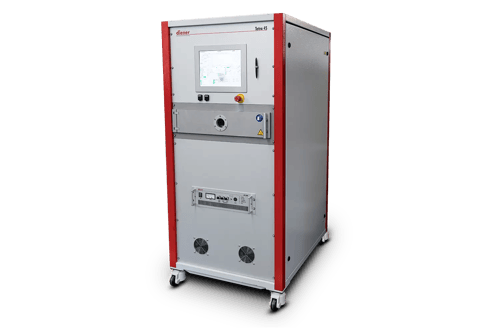
PVD Coating - Physical plasma coating process • Plasma enhanced PVD
Coating PVD is a plasma coating process that involves the physical process of depositing thin solid layers of another material onto a surface or part in order to make that object more durable. Coating PVD is different than CVD, otherwise known as chemical vapor deposition, because Coating PVD requires no chemical reaction to happen at the surface of the object for the coating to work. Coating PVD can be accomplished using several different techniques. One of the more common techniques is called plasma sputter deposition. This process uses plasma ions to bombard the material which causes some of it to vaporize and then that vapor is deposited onto the desired surface.
PVD coatings are depositions, which are produced by the condensation of vapors of different materials on a suitable surface. The most frequently used materials are metals, carbon, ceramics, glass, or polymers. There are two widely used PVD coating technologies: Evaporation and sputtering. The former has been around for a long time and is frequently used for thin metal films. Mirrors, for example, have been made since the 19th century by the evaporation of silver and subsequent coating on glass sheets. A special form of evaporation PVD is plasma spraying. For this technology, a hot plasma flame is created in some kind of working gas, such as air, argon, nitrogen, etc. The coating material is then introduced in form of a fine powder. This power gets melted or evaporated quickly and forms rather thick films when it hits the relatively cool substrate surface. The big advantage of plasma spraying is that it can be carried out under atmospheric pressure. Thus, no vacuum equipment is needed. The process is also pretty fast. However, the coated area tends to be rather small. Thus, plasma spraying is often done by a robot arm, which moves the plasma spray head evenly over the substrate. With this trick, large areas can be coated in a short time. Plasma spraying is commonly used for high-temperature coatings, such as titanium oxide, alumina, or zirconia.
Sputtering, on the other hand, is based on the bombardment of a target (i. e. a bloc of the material that is to be deposited) with atoms or ions. Sputtering can create coatings, even on complex, three-dimensional surfaces. Hence, it is used extensively in scanning electron microscopy (SEM). The reason is that specimens for SEM have to have a conductive surface. If the surface is highly resistive, it has to be coated with a thin metal film before putting it into the SEM. Such samples can have very complex shapes but with sputtering even biological specimens like insects or plants can be coated with a thin metal film without damaging them. This is owed to the fact that the sputter particles have very high energy but the sputtered atoms have a very low temperature. Thus, even heat-sensitive materials such as biological samples can be PVD coated.
The sputter target is placed in a vacuum chamber to avoid any interaction with the air or other unwanted gases. The sputtering particles have high kinetic energy, starting from some tens of eV upwards when they hit the target surface. Since some fraction of the impinging sputter particles is ionized (about 1 or 1 %), sputtering is, in fact, also a plasma application. Due to the high kinetic energy of the bombarding particles, atoms from the target get ‘kicked’ out and fly toward the substrate where they form a film. The substrate is usually mounted vis-à-vis the target. The particles from the target cover the substrate fast and evenly. Even heat-sensitive substrates like plastics can be coated with ceramics or metals due to the low temperature of the sputtered particles. If the substrate is very sensitive, the vacuum chamber can be filled to some degree with an inert gas. This enables the control of the kinetic energy of the particles coming from the target because they may undergo some collisions and lose some of their velocity before they are deposited.
Sputtering can be used for a wide variety of materials, ranging from metals to ceramics. Sputter coatings can be single-layered or multilayered and can consist of materials like silver, gold, copper, steel, metal oxides, or nitrides (i.e. different forms of ceramics). There are different forms of sputter processes, namely ion beam sputtering, reactive sputtering, high-power impulse magnetron sputtering (HiPIMS) and other, more exotic forms.
For ion beam sputtering a beam of highly energetic ions is produced in a suitable ion source and accelerated toward the target. However, before the beam hits the target, the ions are neutralized by an electron source. Thus, the impinging particles are neutral and one can sputter conductive as well as non-conductive materials. In reactive sputter devices, the sputtered particles undergo chemical reactions before they are deposited onto the substrate. This is often enabled by using reactive working gases in the sputter chamber. HiPIMS occurs at very high power densities of several kW/cm² in a strong magnetic field but during short pulses of some microseconds. The dense plasma that is created allows for the rapid deposition of various materials.
Many modern industries use PVD technologies along their manufacturing and supply lines. Here are some examples of economic branches, which rely on PVD:
To learn more about the use of plasma in manufacturing, please read our eBook titled "Manufacturer’s Surface Activation Guide for Improved Adhesion."